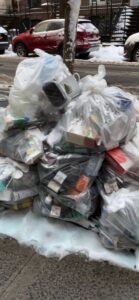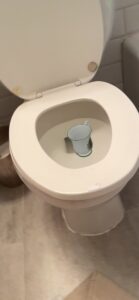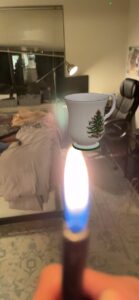Where I was and where I am now. Week 1 & 2
Hi, I have some journaling to catch up on. I will be recounting these past week’s progress.
My topic is still somewhat broad and needs to be condensed. It’s something along the lines of:
For my thesis, I want to explore our relationship to memories, places, and things, and how do those relationships shape how we grow and who we become. How is a memory contained in physical objects and things? The relationship between the abstract and the physical?
Where I was Last Week.
I began with a mindmap exploring potential topics. It can be found here.
I always find it productive to think about potential output mediums and forms. This project has to combine the physical and the virtual. I thought about my past research on Alan Kaprow. What if I created a Happening? I have always been fascinated by large-scale projections mapping projects and visuals to music that communicate a tone. What if I explored projection mapping and generative visuals/shaders in TouchDesigner? Teambuilding exercises and games have always played a role in my life. What if I invented my own version of one of these? What if I created my own puppet show, play zone, a space for LARPing, or an experiential story? What if the experience didn’t end when you distance yourself from the experience, if the experience continued well beyond, the actual experience? A never-ending experience? It was time to dig deeper into topics.
My initial topics centered around childhood and personality development. I’m fascinated by how children view themselves, how they are able to suspend their imaginations with ease. I’m also interested in the moment when a child realizes who they are, when you become self-conscious of your existence relative to others. How do children then develop their own personalities? Can I explore how children form their sense of love, hate, fear? By the end, I want guests subject to accept all these facets about themselves. What are the core pieces that make up your personality: interests, passions, gender, origins? How do these elements come together to make up who you are? Overall, I envision a virtual-experiential moment for others that encourages people to explore the person that they are today and how they got there.
At this point, I had no focus. I had broad ideas, but no concrete direction. Everything felt daunting. The type of project I want to create is an experience where everyone takes something different away. I don’t want to teach something or communicate a theory. Projects like these, which are more precise, are easier to run away with, but that’s not what I’m interested in. I’m leaning towards an art piece that has universal appeal, that leaves the takeaway up to my audience, that has a lasting impact.
Where I am Now
As I explore student and professional work, my focus became more clear. I remembered attending a magic show a few years ago. It was Derek DelGaudio’s In & Of Itself. How he sandwiched his personal story within tricks was cathartic. The moment that stood out to me was a book. On each show, he asked an audience member to leave with a book. They were to write down how this show will end. The next day, they returned and shared their ending. It was a book of hypothetical endings, personal anecdotes, drawings, and stories. A special book that is shared between people. I thought about one of my favorite books from high school, “S.,” by J.J Abrams and Doug Dorst. A story within a story within a story. My favorite layer was the story of two characters passing margin notes about the inner story to each other at a library. Something about the bond that built through a book felt magical. Another project that I loved was Objects in a Mirror Appear AR Closer Than They Appear, an AR playground of archaic objects that each had a portal to a memory. It was a playground that explored the relationship between memories and objects.
I began to ask questions: Why does a thing embody the spirit of a person? Why do adults love collecting toys but generally don’t indulge in playing for that object’s purpose? Why do we hoard/ keep things from our past? Is it important to hold onto memories? How does memory recall vary from person to person? What’s the best way to store a feeling, remember what it was like to go through something?
For my thesis, I want to explore our relationship to memories, places, and things, and how do those relationships shape how we grow and who we become. How is a memory contained in physical objects and things? The relationship between the abstract and the physical?
I have four initial ideas for thesis projects that could be built upon:
- The Memory Journey. The guest explores their relationship with an object. They would take an object as your “guest” to a a space, an exhibit, a happening. That object is something that you have a deep relationship with, negative or positive. In different rooms in the exhibit, you are doing different things that question your relationship to that object. And in the end, there’s a cathartic letting go experience. It replaces that memento with something of “equal value.” It’s a trade-in program. Maybe it’s ironic and totally worthless? Or maybe it’s just the meaningful experience of making your way through the space. The takeaway is that this process of coming to terms with your object can replace the physicality of the object itself.
- The Memory Box. What if we can send our memories around the world and allow others to live through those memories? It’s a platform for users to send their moments to others and see how others create their own memories with that object. It’s about seeing your object with different people and learning about how they develop a relationship with that object. The object gets “vandalized” along the lines of margin notes. People keep building upon the relationships of an object. In the end, it’s a “sculpture” with memories of others around the world. It changes the initial memory through layered meaning.
- Maybe it’s not an object. Create a chain of memories. Instead of starting with an existing object that has a memory maybe you start with memory and pass it to someone else.
- The Memory Playground. You input a story/memory of a place that is associated with memory. It’s a project that turns NYC, into a memory playground. You can walk around exploring destinations where people have built memories through an AR app on your phone. You point your phones to a location, and someone else’s memory appears.
- The Memory Dump. A technique or a series of guided rituals that help you grapple with a memory. The program helps you come to terms with a haunting memory. It could be an AR app that allows you to place your object anywhere. You can upload your object to burn in a pyre. Maybe you virtually dump your object into a dump with other people’s real object. It could be a website of archived thrown-away objects that belonged to others.
Janky Prototypes:
Take Control of your Memory
For my first prototype, I created an AR application that would theoretically allow you to upload a special object that represented a memory. The idea is that you could place this object anywhere virtually. You can throw it in the garbage, in fire, in the toilet. The polished project would probably be a more structured process, with one portion being to take control of that object with this application. This is also the foundation for a possible Memory playground idea, where if you point your camera to a location, an object that resembles a memory appears.
The webpage is on Glitch here. I uploaded a model of a mug as a placeholder object, but the idea is you would be able to upload your own object.




The Memory Box
This is a rough prototype for a memory box. The idea is participants would add their object to the box. They would add a memory to the chain. They would send it to someone else. That person would add their own object, add a memory to the chain, and play with the object of the previous person. They could post sticky notes around the box to communicate with that person as they send it back and forth experiencing each other’s objects. This can be expanded to multiple people.



Related Posts
1 Comment
Leave a Reply Cancel reply
You must be logged in to post a comment.
Kat Sullivan
Adam Colestock
Helen (Chenuan) Wu
Christina Lan
Dorian Janezic
George Faya
Julia Myers
Kelsie Smith
Michael Morran
Po-Wen Shih
Liu Siyan
Fisher Yu
—
Craig Protzel
Christopher Wray
Haoqi Xia
Hayden Carey
Katherine Nicoleta Helén
Maria Maciak
Parisa Shemshaki
Sakar Pudasaini
Skyler Pierce
Steven Doughty
Yiqi Wang
—
Andrew Lazarow
Benoit Belsot
Enrique García Alcalá
Hongyi Zhang
Jay Mollica
Li Shu
Teddy (Jian) Guo
Monika Lin
Wenye Xie
Yiru Lu

Maybe it’s worth interviewing people about their dear objects and memories? And find similar projects that could inspire you and work as references? Projects / experiences that try not to teach a thing but be as an open-ended playground, place of wonder. Some projects that inspired my thesis: https://news.artnet.com/art-world/hank-willis-thomas-wants-send-truth-booth-50-states-election-day-471119, https://redpaperheart.com/work/hiddenstories, https://rubinmuseum.org/events/exhibitions/a-monument-for-the-anxious-and-hopeful